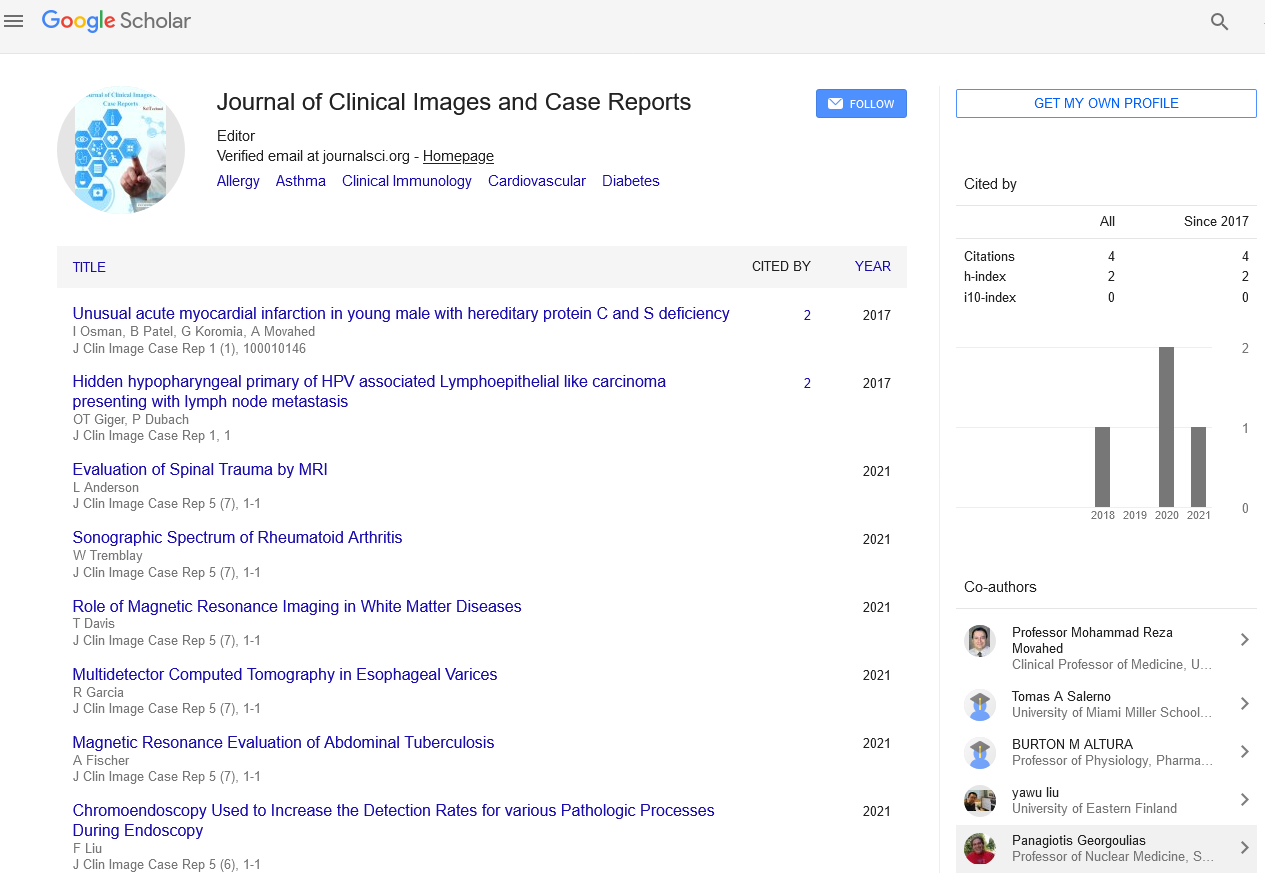Opinion Article, J Clin Image Case Rep Vol: 8 Issue: 5
Endometriosis in Adolescents: Early Detection and Long-Term Care
Giraudet Arbo*
1Department of Pathology and Immunology, Baylor College of Medicine, Houston, USA
*Corresponding Author: Giraudet Arbo,
Department of Pathology and Immunology,
Baylor College of Medicine, Houston, USA
E-mail: arbogiraudet@gmail.com
Received date: 25 September, 2024, Manuscript No. CICR-24-153593;
Editor assigned date: 27 September, 2024, PreQC No. CICR-24-153593 (PQ);
Reviewed date: 11 October, 2024, QC No. CICR-24-153593;
Revised date: 18 October, 2024, Manuscript No. CICR-24-153593 (R);
Published date: 25 October, 2024, DOI: 10.4172/CICR.1000328
Citation: Arbo G (2024) Endometriosis in Adolescents: Early Detection and Long-Term Care. J Clin Image Case Rep 8:5.
Description
Endometriosis is a condition where tissue similar to the lining of the uterus grows outside the uterus, leading to inflammation, pain and, in some cases, infertility. While endometriosis is often diagnosed in women in their 30s or 40s, it can affect adolescents as well. In fact, early detection of endometriosis in teenagers is important for managing symptoms and preventing long-term complications. This article explains the importance of early detection and the role of long-term care in managing endometriosis in adolescents.
Endometriosis in adolescents often presents with symptoms such as severe menstrual cramps, pelvic pain and gastrointestinal discomfort, which can sometimes be dismissed as normal for young girls going through puberty. However, when these symptoms are more severe than expected or persist beyond the usual course of menstruation, they may indicate the presence of endometriosis.
One of the challenges in diagnosing endometriosis in adolescents is the fact that pelvic pain and irregular menstrual cycles are common during puberty. As a result, many adolescents and their healthcare providers may attribute these symptoms to normal growth and hormonal changes. However, if these symptoms significantly disrupt daily life, affect school attendance, or interfere with social and physical activities, further investigation is warranted.
The most effective way to diagnose endometriosis is through laparoscopy, a minimally invasive surgical procedure that allows doctors to look directly at the pelvic organs and take tissue samples. However, laparoscopy is typically only performed when other diagnostic methods, such as ultrasound or MRI, fail to provide clear answers. For adolescents, early consultation with a gynecologist or healthcare provider specializing in adolescent medicine is essential for evaluating symptoms and considering the possibility of endometriosis.
Once diagnosed, managing endometriosis in adolescents requires a comprehensive and individualized approach. The goal of treatment is to alleviate pain, manage symptoms and minimize the impact of the disease on the adolescent's physical and emotional well-being.
In many cases, hormonal therapies, such as birth control pills, hormone injections, or Intrauterine Devices (IUDs), are used to regulate menstrual cycles and reduce the growth of endometrial tissue. These treatments can help reduce pain and inflammation, providing relief for adolescents who experience severe menstrual cramps and pelvic pain. Non-hormonal treatments, such as pain relievers and antiinflammatory medications, may also be recommended to help manage symptoms.
For adolescents with more severe or persistent symptoms, surgical options may be considered. Laparoscopic surgery can be used to remove or destroy endometrial tissue that has grown outside the uterus. In some cases, surgery may be necessary to address complications such as ovarian cysts or adhesions that cause pain or block fertility.
Long-term care for adolescents with endometriosis should also include support for emotional and mental well-being. Chronic pain and the impact of the condition on daily life can contribute to feelings of frustration, anxiety, or depression. Adolescent girls with endometriosis may benefit from counseling or support groups to help them cope with the emotional challenges of living with a chronic condition. Additionally, educating both the adolescent and their family members about endometriosis and its management can empower them to make informed decisions about treatment and care.
Endometriosis is a serious condition that can significantly impact the health and quality of life of adolescents. Early detection is critical to ensuring timely and effective treatment, which can help manage pain, prevent complications and improve the long-term outlook for adolescents with endometriosis. A multidisciplinary approach to care, including hormonal therapies, surgical interventions and emotional support, is key to managing the condition and promoting well-being. With the right treatment and care, adolescents with endometriosis can lead fulfilling lives, even while coping with this challenging condition.
 Spanish
Spanish  Chinese
Chinese  Russian
Russian  German
German  French
French  Japanese
Japanese  Portuguese
Portuguese  Hindi
Hindi 